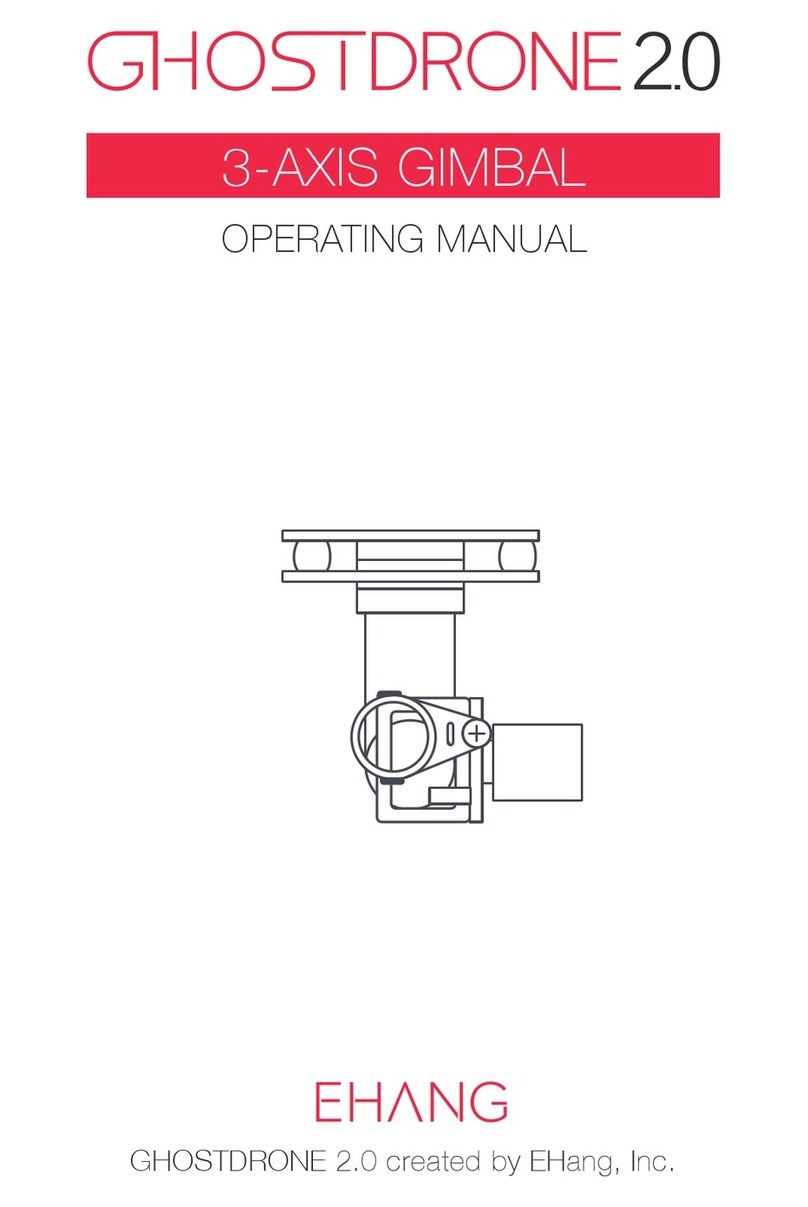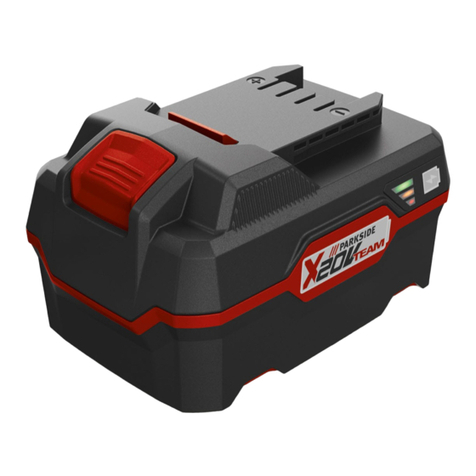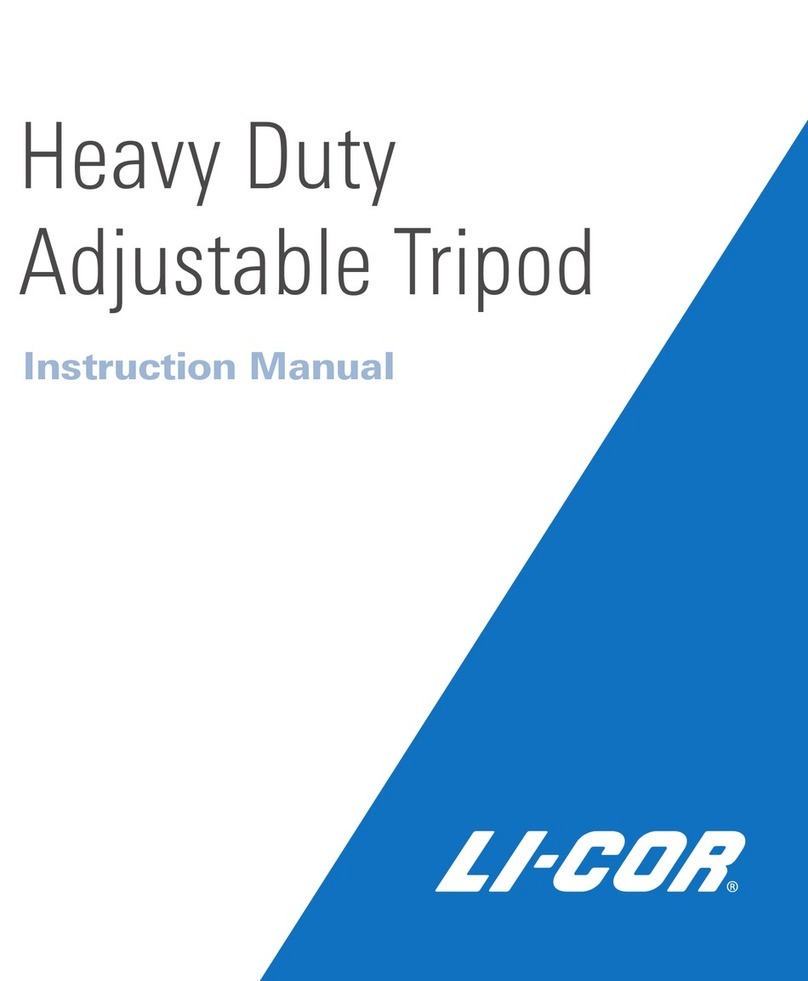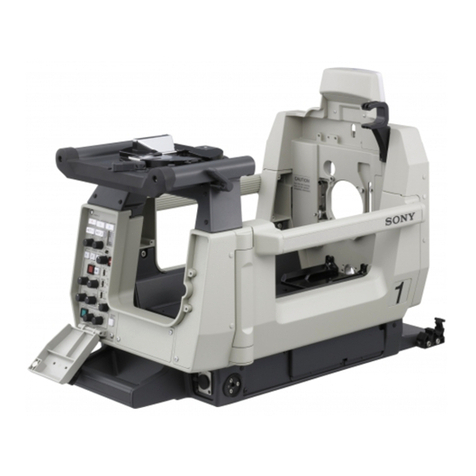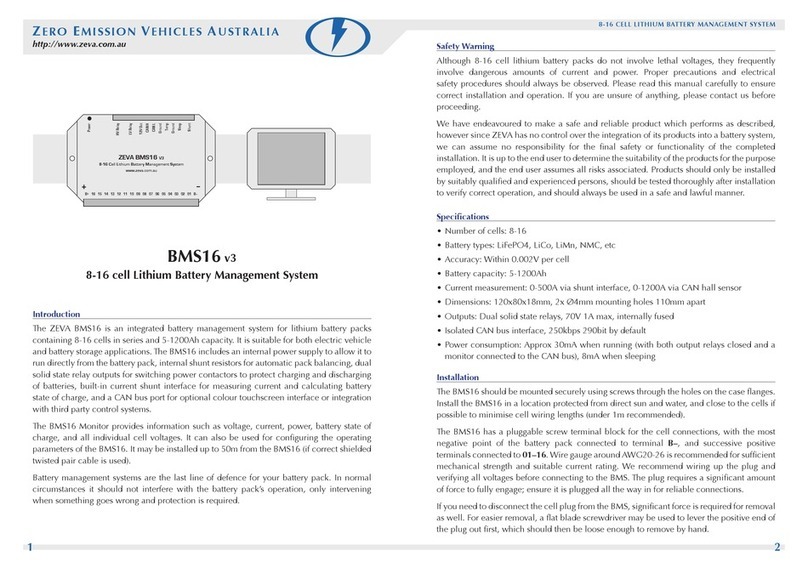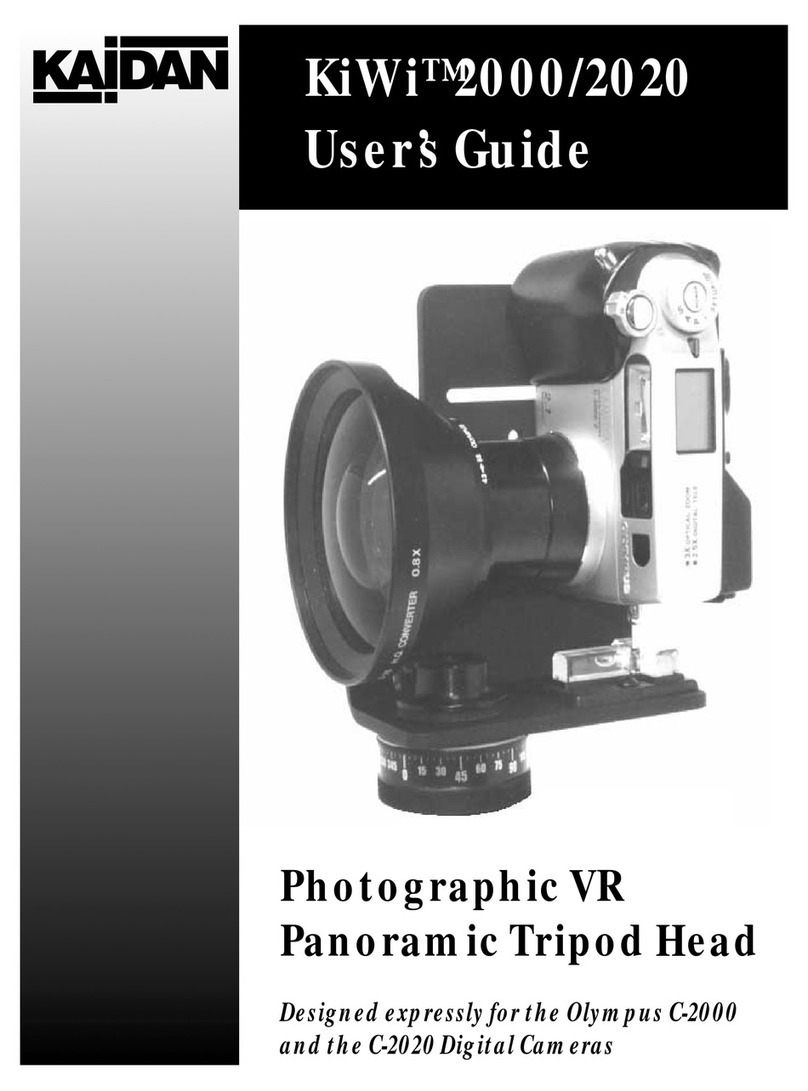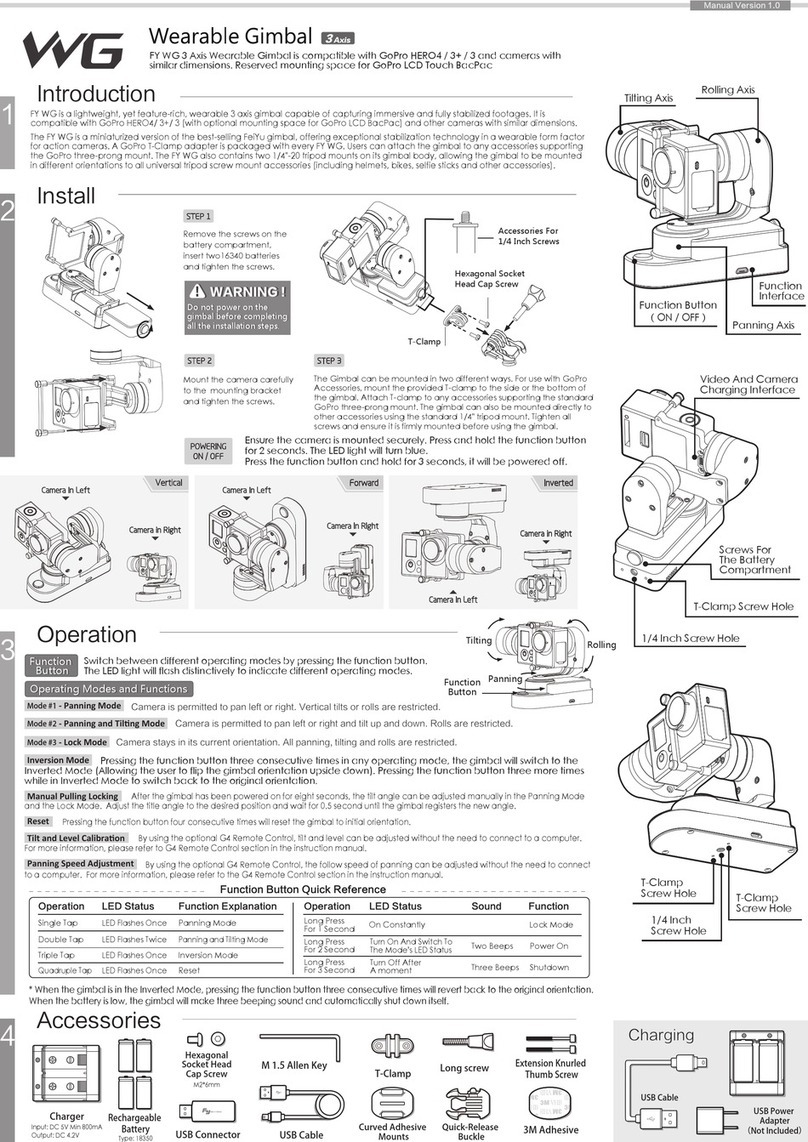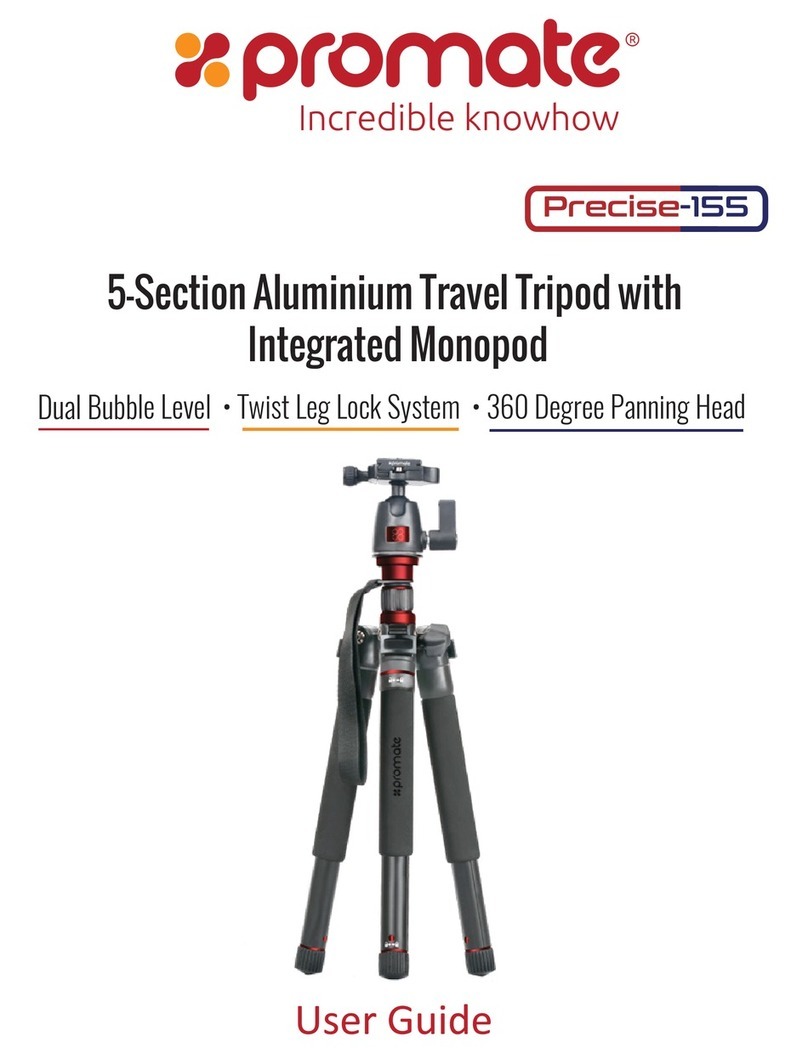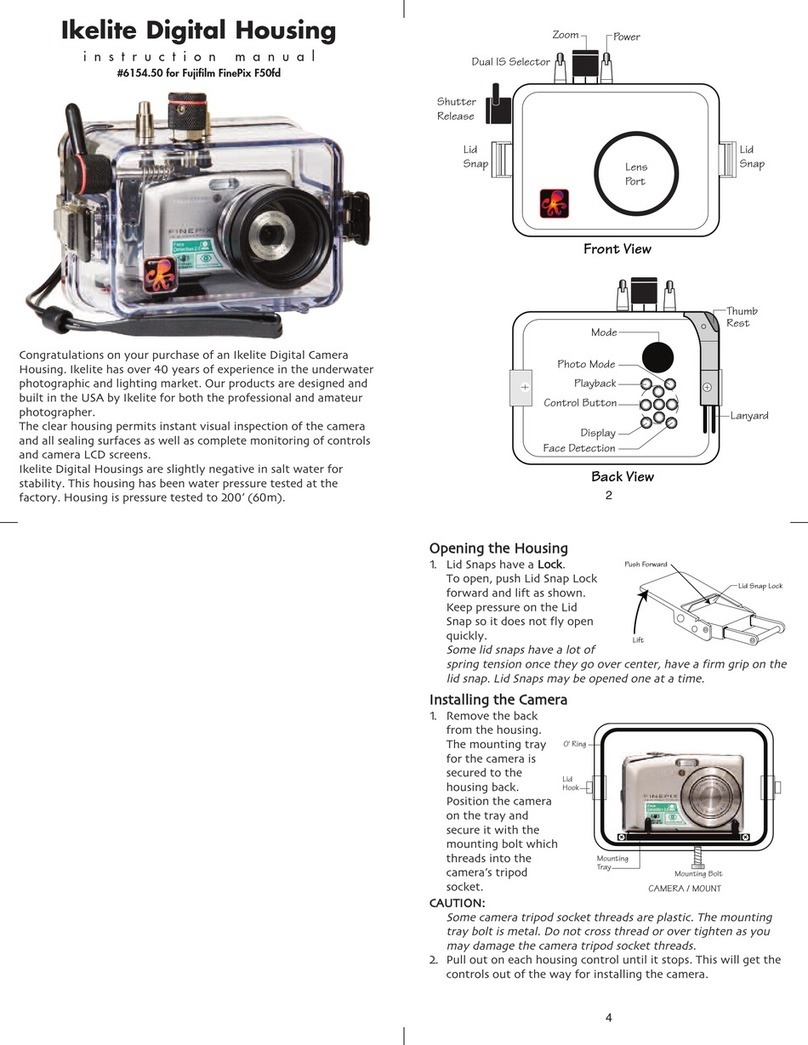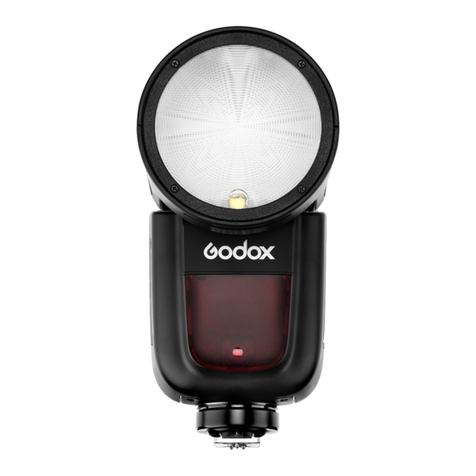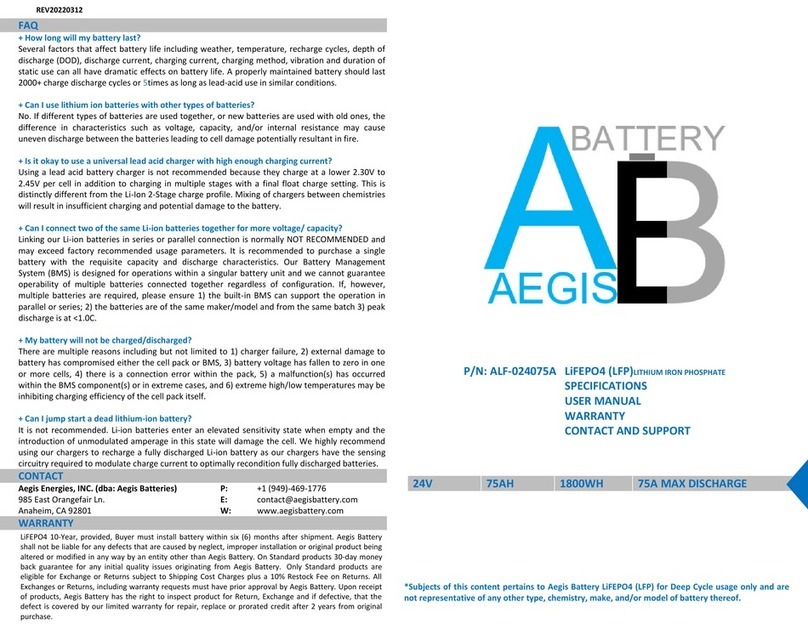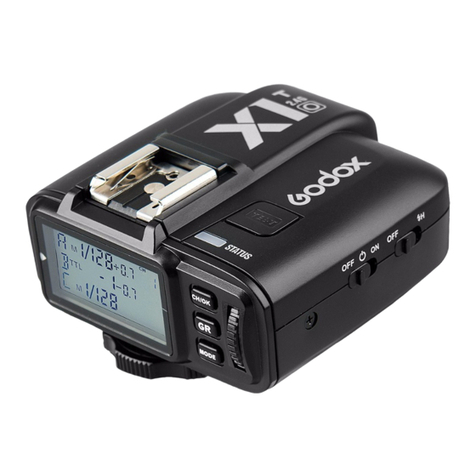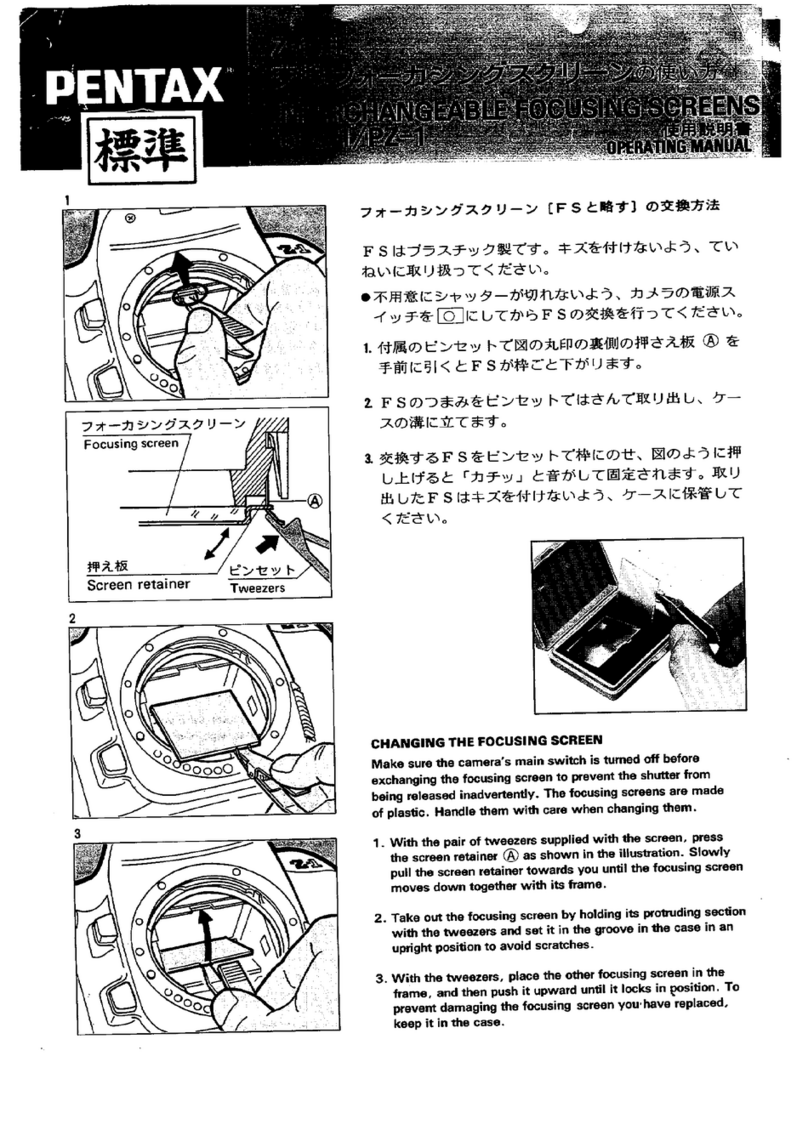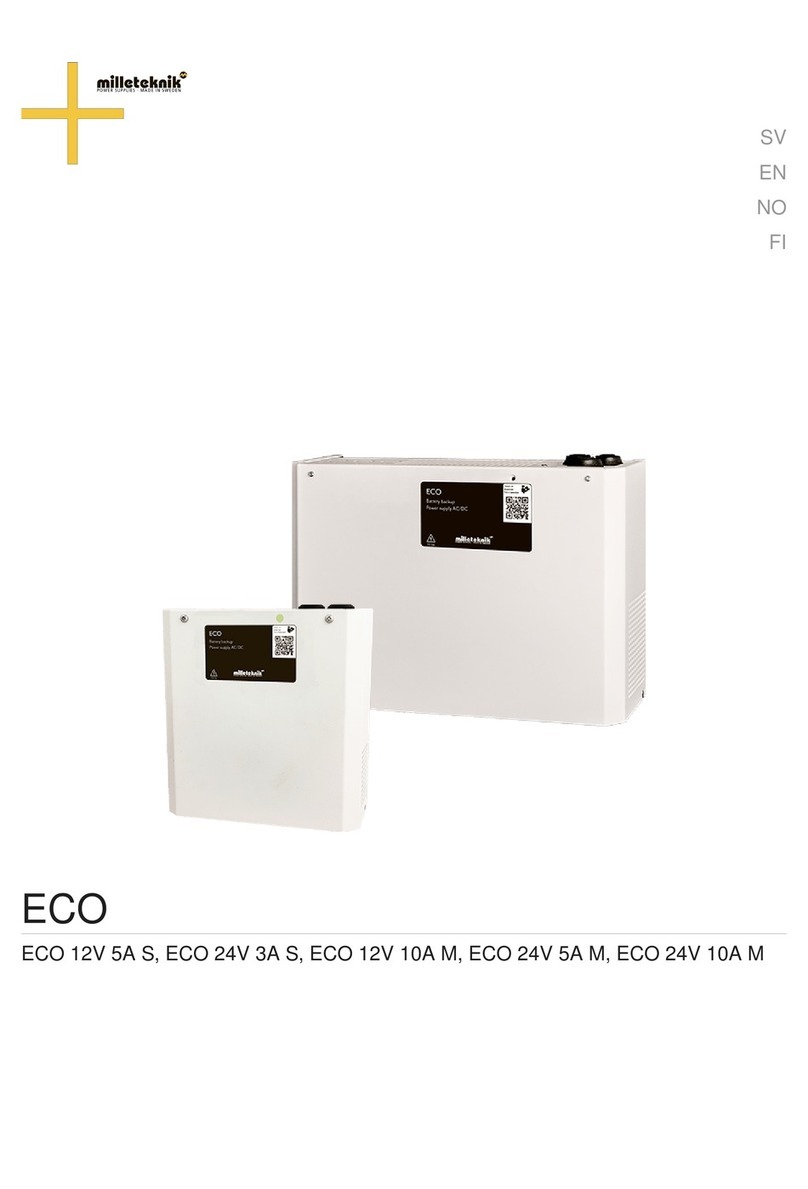ehang GHOSTDRONE 2.0 User manual

OPERATING MANUAL
SMART FLIGHT BATTERY
GHOSTDRONE 2.0 created by EHang, Inc.

Before using smart flight battery, please read
the operating manual carefully and
familiarize yourself with the operations,
warnings and applications. Connecting
circuit incorrectly, setting power or load
parameters which are different from that
written in the manual are all considered to be
improper use. EHang shall not bear any
liability or responsibility of the damage of the
battery, the power adapter, the load, the
copter or any other related accessories or
the accidents arised from improper use.
Disclaimer
English
1

Power Button
Indicator Light
LCD Screen
The smart flight battery is a LiPo 4S battery specially
designed for the GHOSTDRONE 2.0, with capacity of 4500
mAh, voltage of 14.8 V, charge-discharge management
functionality and a smart display screen. The battery should
only be charged by EHang power adapter.
■Structural Diagram
■Introduction
2

Main Interface
■Powering On
Press the power button shortly, then quickly press and hold
the button again. Don't release it until the last letter “G” of
logo “EHANG” fully appears on the screen. The LED indica-
tor light turns on once the battery is turned on, referring to
the diagram below.
Note: When the battery is powered off, press the power button to
check the battery life. (Main interface will display for 3 seconds
while the LED Indicator light stays off during the whole process.)
Remaining Battery Life
Battery Remaining
Capacity
Remaining
Total Voltage
3

■Powering Off
Press the power button shortly,
then press and hold again until
the ‘!’ of ‘SEE YOU !’ sign disap-
pears on the screen.
When the battery is powered on, press the power button
once to enter the secondary interface, referring to the
picture below:
16.66
4516
mAh
98%
Secondary Interface
Seperate
Chamber’s Voltage
Battery Lifespan
Percentage
Number of Fully
Charge and
Discharge Cycle
Electronic
Current
4

■Battery Removal & Installation
Remove Battery
Turn off the battery first. Hold the battery handles to remove
it from the battery compartment.
Install Battery
Hold the battery handles and push the battery into the
battery compartment. Make sure the power blades in the
compartment align with the battery interfaces. When a click
is heard, the battery is well installed.
Note: DO NOT remove or install the battery into the copter when it
is powered on, otherwise the battery will be damaged.
5

Battery
Power Adapter
■Battery Charging
Connect the battery to the power adapter, and then
connect the power adapter to a wall socket (use the plug if
necessary). Once connected successfully, the LED indica-
tor light flashes slowly and the screen displays current
battery information as below:
Charging Interface
Sum Voltage
Seperate
Chamber’s Voltage
Charging
Electric Current
Remaining Time to
Fully Charge
the Battery
Remaining Battery Life
6

Low frequency flash (Green)
High frequency flash (Green)
Solid green
Light off
Charging
Low battery
Working
Standby
■Battery Discharging
■LED Indicator Light Instructions
When the battery is discharging, the LED indicator light
stays on and the screen displays as below:
Discharge Interface
Discharging Current
Sum Voltage
Remaining Discharge Time
Accumulated
Discharging Time
Remaining Battery Capacity Percentage
7

Warning
1. Only the EHang power adapter should be used to charge
the battery.
2. DO NOT use the batteries from other companies. EHang is
not responsible for any dangerous accidents caused by third
party batteries.
3. DO NOT use used LiPo batteries. EHang is not responsible
for any dangerous accidents caused by used batteries.
4. DO NOT use the battery if it is inflated, damaged or
deformed. DO NOT charge or discharge the battery if it is
inflated, damaged or deformed.
5. DO NOT plug or unplug the battery into the copter when it is
powered on, otherwise the battery will be damaged.
6. DO NOT overcharge the battery. DO NOT “trickle” charge
the battery.
7. DO NOT leave the battery unattended when charging for a
long time.
8. DO NOT charge or store the battery under direct sunlight.
Please store batteries at room temperature. DO NOT store
batteries under high or low temperature condition.
9. Recharge the battery only after it cools down to room
temperature. Use the charged battery only after it cools down
to room temperature.
10. DO NOT use the battery in strong electrostatic or electro-
magnetic environments, otherwise the electronic protection
devices might be damaged leading to dangerous accidents.
8

11. DO NOT use any conducting wires or any metallic
substance that would cause battery short circuit.
12. DO NOT attempt to dismantle the battery case. DO NOT
attempt to dismantle, pierce or cut a battery.
13. DO NOT discharge the battery below 3.0 V per cell. Ideally
you never want to go below 3.2 V per cell to maintain a healthy
battery. 2.9 V per cell and lower is causing permanent damage.
14. DO NOT leave the battery sitting around on a full charge
for more than 2-3 days. If by the 3rd day you realize you are not
going to use your battery today, you need to discharge your
battery down to 3.6v-3.8v per cell for safe storage until you are
ready to use the battery again.
15. Depending on how they are used, most LiPo batteries
typically do not last longer than 300 charge cycles. Leaving the
batteries around on a full or depleted charge all the time,
running them completely dead, or exposing them to high
temperatures will shorten this lifespan dramatically.
16. Always pack your batteries in your carry-on bag and never
in your checked baggage when traveling on an airplane. It’ s
the law.
9

Storage Instructions
1. The battery should be stored in an environment with the
temperature of 23±5°C.
2. The battery must be stored in places away from children,
water, fire and metal.
3. Always keep a Class D fire extinguisher nearby your battery
charging/discharging and storage area. The battery charging/-
discharging and storage area should be free from any materials
which can catch fire such as wood tables, carpet, or gasoline
containers. The ideal surface for charging and storing batteries
is concrete or ceramic.
4.DO NOT use your flight case/travel case for long term battery
storage. The foam and plastic in these cases can help spread
a LiPo fire. Always use a fire proof container such as a metal
ammo box or fire proof safe for storage.
5. If the battery is not being used for more than 1 week, keep
the battery capacity between 50% to 60%. Charge and
discharge the battery once every two months.
6. Do not discard batteries in general household waste.
Damaged or unusable batteries must be disposed in contain-
ers specially reserved for this purpose. When disposing of
batteries, follow appropriate local guidelines and regulations.
10

Weight
Type
Voltage
Battery Capacity
Operating Temperature
Maximum Charging Power
Charging Time
402 g
LiPo 4S
14.8 V
4500 mAh 67 Wh
-10°C ~ +40°C
60 W
≤70 min
■Specifications
11

■Warranty
Strict quality control will be conducted before delivery. 6
months’ warranty is guaranteed for problems not caused by
users’ improper use. Removal of the products’manufacturing
label will be regarded as waiver of warranty. We will not offer
complimentary maintenance if the label is removed or
damaged. But limited warranty is still provided.
EHang, Inc. reserves all right to interpret this warranty.
■Contact Us
Business Hour:
Monday – Friday 9:00 A.M – 5:00 P.M (PST)
Customer Service Phone:
+1 650-533-8554 / 888-800-7056
Customer Service Email:
12
Other manuals for GHOSTDRONE 2.0
5
Table of contents
Other ehang Camera Accessories manuals
